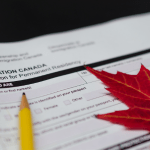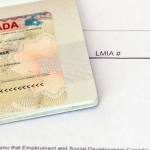Open Work Permit Pilot for sponsored spouses and common-law partners in Canada lengthened. It is the fourth increase for the Open Work Permit Pilot after its inception in 2014.
Canada’s federal government is lengthening its Open Work Permit Pilot for sponsored spouses and common-law partners who are residing in Canada and in the method of appealing for permanent residence under the Spouse or Common-Law Partner in Canada Class.
The Open Work Permit Pilot has been stretched since its launch in 2014, said Immigration, Refugees and Citizenship Canada (IRCC).
- The pilot recognizes eligible spouses and common-law partners living in Canada and is being sponsored by Canadian citizens or permanent residents under the Spouse or Common-Law Partner in Canada Class (SCLPC) to apply for an open work permit.
- An open work permit is not attached to a specific job or employer. Nevertheless, employment in childcare and healthcare is limited to those who have obtained the required medical clearance.
- They must have a valid temporary resident status to be eligible, either as a visitor, student or worker, and live at the identical address as their sponsor, amongst other criteria.
- “Canada recognizes that when families can work while living together, their integration outcomes are improved. Extending this pilot ensures applicants can work, provide for their families and contribute to the Canadian economy while waiting for their permanent resident applications to be processed,” IRCC stated in an update advertised January 30, 2019.
How to Get the Open Work Permit
Individuals applying below the Open Work Permit may tender a work permit application simultaneously as your sponsorship application, accompanying an application for permanent residence.
Applicants who have applied previously for permanent residence but have not yet received a work permit may submit a work permit application form distinctly. OR
Applicants who have previously received approval in principle on your permanent residence application:
- Implying they have obtained a letter from IRCC asserting they meet the permanent residence eligibility provisions, but they (or their family members) have not yet passed the medical, security, and background inspections – may appeal for an open work permit online.
IRCC states that individuals who have a work permit received through the pilot program need apply for a work permit extension before their general visa expires.
Overview of the application process
- Supporting documents
- Photocopy of student’s study permit
- Photocopy of spouse/partner’s study/work permit, visitor record or visa (if applicable)
- UBC Letter of Enrolment
- Photocopy of marriage certificate or common-law declaration (and an official translation, if not in English or French)
- Evidence of funds
- Photocopy of spouse/partner’s passport (include bio-data page plus any pages with stamps, visas or markings)
- Supplementary documents may be needed
Understanding the Form
- UCI: UCI holds for “unique client identifier,” also identified as “Client ID.” It is an eight-digit number that appears on your study permit (and work permit, if you have one).
- Type of work permit to be selected: Most spouses/partners should choose “a work permit with a new employer.”
- Mailing address: A “street no.” is the chief figure outside a building. Some “street names” also include numbers.
- Document number: A document number surfaces on official immigration documents, e.g., study permits. It is customarily printed in black ink as a letter (an “F” for study permits) accompanied by nine digits.
- Details of prospective employer section: Although you do not need a job proposal to appeal for a spouse/partner work permit, you must finish this section. You do not require to attach an offer of employment or list a Labour Market Impact Assessment.
- Employment segment: If you do not have a job, you may explain your prevailing situation, like “accompanying spouse/partner.”
- Duration of expected vocation: Write “from” today’s date and “to” the termination date of the spouse/partner’s study permit.
- Background data: “Have you previously applied to enter or remain in Canada?” If you have appealed for a study permit, a Temporary Resident Visa (TRV), a work permit, or permanent residence, you must inform that IRCC. Mark the box “Yes” and write down when you applied for each sort of document in the box produced for details.
- Evidence of a medical exam: You do not require proof of a medical exam unless: you lived in specific countries for more than six months in the past 12 months, or you aspire to work in a particular health or education-related occupations.
- Biometrics: If you have not previously offered biometrics (fingerprints and a photo), it will need you to submit them in-person at a designated Service Canada location. The time it takes to submit your biometrics is not covered in the processing time for your work permit, and your application will not be processed until biometrics are obtained.
- You only require to provide biometrics once every ten years. U.S. citizens and people who have produced biometrics in the past ten years and specific other individuals are exempt from providing biometrics.
- Pay the biometrics fee.
- Tender your work permit application for faster processing.
- Get your biometrics instruction letter.
- If you applied online, you would get an electronic biometrics instruction letter within 24 hours.
- Book an appointment as soon as feasible at a designated Service Canada location
- Submit your biometrics within 30 days of getting your biometrics instruction letter
Signing online: You cannot sign the form if applying online; upload the form without signing. After uploading all your documents, you will later be asked to sign your application by typing your name electronically.
Take screenshots: Sometimes, applications are refused because the online tools and systems may not have uploaded entirely required documents. You may be able to convince IRCC to change the decision if you have proof showing that your required documents were submitted as part of your application.
- Take three screenshots while finishing your application
- The Document Checklist page after all records have been successfully uploaded
Get Started with Jet Immigration
Jet Immigration is ranked among the best immigration consultancies in Greater Toronto Area and have been trusted by thousands of happy clients.
The team specializes in most difficult and complex case. If you are ready to apply for the Open Work Permit for your spouse or common-law partner, we are just a click away. Contact us for free consultation or email us at visa@jetimmigration.ca.




1 Comment
aroraimmigration
Thank you so much for sharing your wonderful views.